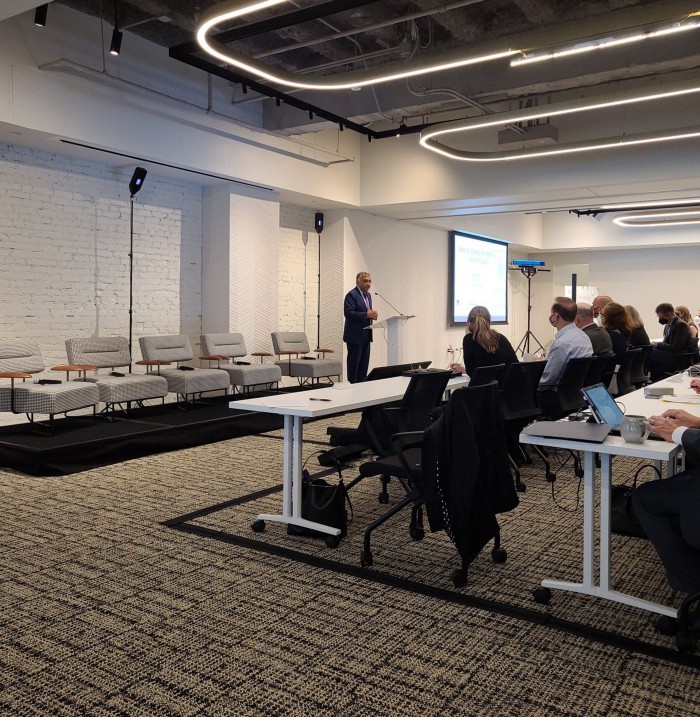
Credit: This article was inspired by Joey Fox’s Medium article; please visit the source “Intro to Far-UV: Great Medium Post By Joey Fox Editor of It’s Airborne”.
Far-UV: The Future of Indoor Air Quality
The threat of airborne diseases has never been more real, with the ongoing COVID-19 pandemic affecting millions of people worldwide. In response to this, there has been a growing interest in finding new ways to create safe indoor spaces. One solution that has been gaining attention is Far-UV light.
What is Far-UV?
UV light is a type of radiation that is found in sunlight and is divided into three categories: UVA, UVB, and UVC. UVC is the most energetic of the three and is also the most dangerous to human health. However, within the UVC spectrum, there is a special range called far-UV (200-230 nm), which has unique properties that make it a powerful tool in the fight against airborne diseases.
What Makes Far-UV Special?
One of the key benefits of far-UV is its ability to inactivate viruses, making it a valuable tool in the fight against airborne diseases like COVID-19. Unlike traditional UV light (254 nm), far-UV light does not penetrate human skin or eyes, making it safe for use in occupied spaces. In fact, the threshold limit value (TLV) for far-UV light on human skin and eyes is 27 times higher than for traditional UV light.
How Effective is Far-UV?
A team of scientists conducted an experiment where they filled a room with aerosolized Staphylococcus aureus and turned on 5 15W far-UV lamps. The concentration of bacteria dropped by 98% within minutes, equivalent to 128-322 equivalent air changes per hour. This experiment showed the effectiveness of far-UV in killing airborne pathogens and was confirmed by mathematical modeling, which showed that far-UV can provide greater than 100 equivalent air changes per hour.
Compared to other air cleaning methods, far-UV provides a much higher rate of air changes per hour. Minimum ventilation requirements are usually around 2-3 air changes per hour, while portable HEPA filters can provide 2-5 and upper room UV can provide 20-30. Only far-UV can provide 100 or more equivalent air changes per hour, making it the most powerful tool in the fight against airborne diseases.
How is Far-UV Created?
Far-UV light is primarily produced by Krypton-Chloride (KrCl) excimer lamps. These lamps emit light primarily at 222 nm, but there is also some light outside of this band. To ensure safety, companies often include filters that only allow wavelengths between 200-230 nm to be exposed to the room.
Where Can You Buy Far-UV Lamps?
There are several companies that sell far-UV lamps, including QuantaGuard, Ushio, Eden Park, and Sterilray. It is important to note that not all far-UV lamps are created equal, and some may be unfiltered, which can pose a risk to human health.
Conclusion
Far-UV is a powerful tool in the fight against airborne diseases. With its special properties, it can provide a high rate of virus inactivation while still being safe for occupied spaces. The main way it is created is through KrCl excimer lamps and is available from various suppliers.
By using far-UV, we can create safer indoor environments, especially during the ongoing COVID-19 pandemic. With its effectiveness and safety, it is a promising solution for reducing the spread of viruses and other pathogens in the air.
In conclusion
In conclusion, Far-UV light offers a promising solution for reducing the spread of airborne pathogens, including viruses like COVID-19. With its ability to provide high rates of virus inactivation while still being safe for occupied spaces, it is a valuable tool in the fight against the spread of diseases. Whether it be through filtered KrCl excimer lamps or other methods, Far-UV is a valuable addition to the arsenal of tools used to create safer indoor environments.
While the technology is still new and more research is needed, the results so far show that far-UV has the potential to provide a safe and effective solution for reducing the spread of airborne diseases. As we continue to grapple with the COVID-19 pandemic, it is important to explore new and innovative ways to keep indoor spaces safe for everyone.
FAQs
- What is far-UV and how is it different from traditional UV light? Far-UV is a special range of ultraviolet light that is more energetic than other UV light but does not penetrate skin or eyes, making it a safe alternative for occupied spaces. Traditional UV light, on the other hand, can cause damage to skin and eyes if exposed.
- How is far-UV created? Far-UV is primarily created through Krypton-Chloride excimer lamps. Some companies sell filtered far-UV lamps, while others sell unfiltered lamps.
- How effective is far-UV in reducing airborne pathogens? Studies have shown that far-UV is effective in reducing the concentration of aerosolized pathogens in a room. In one experiment, the concentration dropped by 98% after 5 far-UV lamps were turned on.
- Is far-UV safe for occupied spaces? Yes, far-UV is safe for occupied spaces as it does not penetrate skin or eyes. The threshold limit value for exposure to far-UV is much higher than traditional UV light, making it a safe option for indoor use.